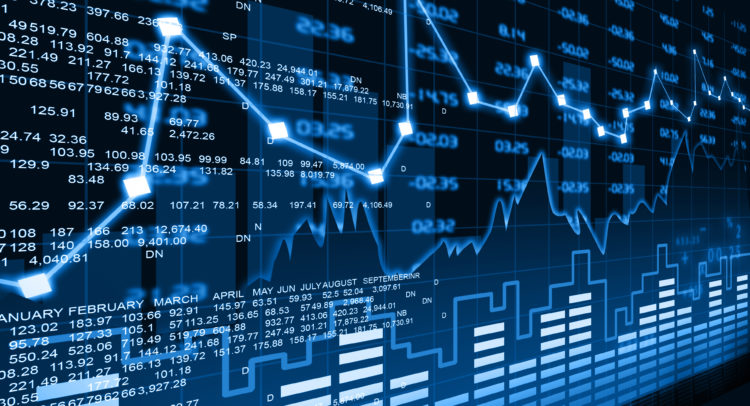Stocks Finish Friday’s Session in Negative Territory after Powell’s Remarks
Last Updated 4:30PM EST
Stock indices finished Friday’s trading session in the red. The Dow Jones Industrial Average, the S&P 500, and the Nasdaq 100 decreased by 3.03%, 3.37%, and 4.1%, respectively.
Technology (XLK) was the hardest hit sector, as it declined by 4.27%. Conversely, the energy sector (XLE) was the session’s leader, although it was also in the red, finishing with a loss of 1.16%. In addition, WTI crude oil remained relatively flat on the day, with a slight decline of 0.12%. It is currently hovering around the high-$92 range.
The bloodbath was the result of Jerome Powell’s comments at Jackson Hole. Consistent with what the Federal Reserve has been communicating for a while now, Jerome Powell said that the Fed will continue raising interest rates and keep them elevated until inflation is undoubtedly tamed.
Simply put, an economic slowdown won’t be enough to sway the central bank to change course if inflation remains high. Based on the market’s reaction, it appears that investors were surprised by the announcement and were expecting a more dovish stance. This is somewhat surprising because Powell has been very clear that bringing inflation down to 2% is the Fed’s most important goal.
The fact that investors somehow thought that the Federal Reserve wouldn’t continue raising rates suggests that the recent rally had made investors slightly euphoric. This demonstrates just how important investor psychology is and how quickly market participants forget about the bigger picture.
Consumer Sentiment Beat Forecasts in August
Last Updated 3:00PM EST
Stock indices are in the red heading into the final hour of today’s trading session. As of 3:00 p.m. EST, the Dow Jones Industrial Average, the S&P 500, and the Nasdaq 100 are down 2.5%, 2.8%, and 3.3%, respectively.
On Friday, the University of Michigan released its results on consumer inflation expectations over the next five years. Consumers now expect inflation to be 2.9%. This number has pulled back from its June high of 3.3% to remain in line with July’s reading of 2.9%.
Taking a look at consumer sentiment, results came in at 58.2, which was better than the expected 55.1. This is a huge jump compared to last month’s reading of 51.5. Similarly, consumer expectations were also better than expected. August saw a print of 58 versus the forecast of 54.9. This was an even bigger jump compared to last month’s result of 47.3.
It’s likely that falling gas prices and hints of easing inflation have positively impacted how consumers feel about the economy. Nevertheless, it’s worth mentioning that these readings are still hovering near record lows. It’ll be interesting to see if consumers remain positive as interest rates continue to rise.
Personal Spending Comes in Lower than Expected
Last Updated 12:30PM EST
Stocks are in the red halfway into today’s trading session. As of 12:30 p.m. EST, the Dow Jones Industrial Average, the S&P 500, and the Nasdaq 100 are down 2%, 2.3%, and 2.9%, respectively.
On Friday, the U.S. Department of Commerce released its Real Personal Consumption report. This data measures the change in personal consumption for goods and services on a month-over-month basis, adjusted for inflation. Real Personal Consumption increased by 0.2% in July compared to a 0.1% increase in the previous month.
Similarly, the Bureau of Economic Analysis (BEA) released its Personal Spending report, which measures the inflation-adjusted change in all spending by consumers. This number increased by 0.1% month-over-month compared to the expected 0.4%. For reference, it decreased from the previous month’s reading of 1%.
In addition, the BEA also released data on the change in personal income, which was an increase of 0.2% versus expectations of 0.6%.
Together, these numbers suggest that consumer demand slowed down in July. It’s also worth noting that real personal consumption increased the same as personal income, suggesting that consumers are spending whatever increases they get from their incomes.
Core PCE Comes in Lower than Expected
Last Updated 10:00AM EST
Stocks are in the red after the first 30 minutes of today’s trading session. As of 10:00 a.m. EST, the Dow Jones Industrial Average, the S&P 500, and the Nasdaq 100 are down 0.4%, 0.7%, and 0.9%, respectively.
On Friday, the Bureau of Economic Analysis released its Core Personal Consumption Expenditure (PCE) Price Index for the month of July. Since this is the Fed’s preferred measure of inflation, it tends to have more influence over Jerome Powell’s decisions than the CPI does.
On a month-over-month basis, core PCE growth came in at 0.1%, which was lower than expectations of 0.3%. This is a good sign, as it’s in the 0.1% to 0.2% range that it consistently hovered around prior to the pandemic.
On a year-over-year basis, core PCE increased by 4.6%, which is lower than last month’s reading of 4.8%. This was also lower than expected as Economists had forecast a print of 4.7%.
Nevertheless, core PCE doesn’t include food and energy prices. When including these two items, year-over-year PCE came in at 6.3%, which was lower than the previous peak of 6.8% seen in the last report. However, regular PCE actually decreased on a month-over-month basis by 0.1%. This was significantly better than last month’s reading of a 1% increase.
It’s good to see the month-over-month figures coming in much lower than they did in the previous report. Still, it’s worth mentioning that these numbers come after a significant increase in June inflation. Therefore, it may simply be a temporary pause that could resume. In addition, the year-over-year numbers remain high, which means the Federal Reserve will likely continue tightening.
Pre-Market Update
U.S. equity futures dipped on Friday morning as investors await updates on the future of the monetary policy from the Jackson Hole symposium.
Futures on the Dow Jones Industrial Average (DJIA) inched 0.17% lower, while those on the S&P 500 (SPX) lost 0.25%, as of 3.52 a.m. EST, Friday. Meanwhile, the Nasdaq 100 (NDX) futures dipped 0.32%.
Fed Chair Jerome Powell is expected to address the crowd from Jackson Hall on Friday, giving us a peek into the Fed’s plans for the economy with regard to curbing inflation and shrinking the country’s balance sheet.
However, most experts do not expect any surprises from the Fed, as it is highly likely that the central bank will stick to its hawkishness in order to rein in inflation and bring it down from the current level (about 8.5%) to the range of 2.25%-2.5%. Last week, Fed officials indicated that the interest rates will continue to be increased despite the risk of a recession.
This expectation increases the likelihood that market activity will pick up the pace and result in a relief rally after Powell’s speech, assuming that there will be no major surprises there.
As the markets keep their focus on Friday’s speech, all three major stock indexes jumped following a retraction in bond yields on Thursday. It should be noted that long-term Treasury yields typically gain when there is uncertainty in the economy, while the stock market suffers.
That being said, the bond market continues to be and is expected to remain volatile, affecting the stock market.
At the end of the regular trading session Thursday, the Dow advanced 0.98%, the S&P 500 gained 1.41%, and the Nasdaq 100 closed 1.75% higher. However, the averages are expected to close their second consecutive week in red.
Amid all the noise, the U.S. President’s student loan forgiveness move has heightened the risk of higher inflation through elevated taxes. Moreover, the move is also expected to spoil the benefits of the Inflation Reduction Act, which encourages deficit shrinking.









